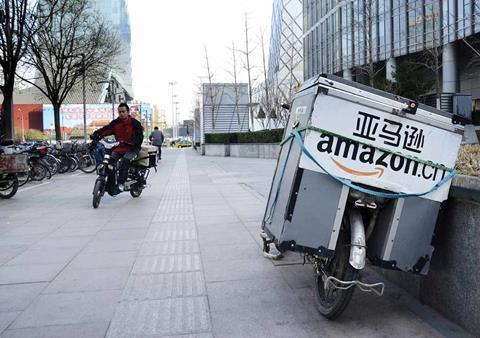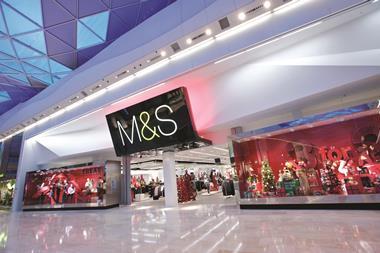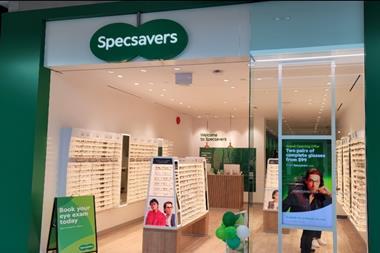Retailers are increasingly seizing the opportunity for online expansion overseas, but international etail markets vary greatly.

Tesco, which last week revealed it is poised to roll out its grocery offer online in 50 Chinese cities later this year, is one of a raft of retailers that is looking to the web for international growth.
However, operating a successful online business overseas is not as straightforward as simply launching a website, there are myriad factors to take on board before making the leap.
Retail Week takes a look at the quirks of international ecommerce around the globe.
Fulfilment expectations vary
Online orders are likely to be delivered by bicycle in China.
The Chinese consumer has very high expectations, and same-day delivery and cash-on-delivery are the norm in this highly competitive market.
Amazon, which has been in China since 2004, offers a last-mile delivery service using a fleet of bicycles, motorbikes and vans to ensure customers get their purchase as speedily as possible, observes Planet Retail senior retail analyst for ecommerce Lisa Byfield-Green.
Amazon opened its largest distribution centre outside of the US in Kunshan in China’s Suzhou province to improve service for its Chinese customers.
US giants eBay and Walmart piloted a bike courier service in the US last year to help them offer super-quick deliveries over Christmas.
Although the general default position in all regions is to deliver goods as quickly as possible, unlike China there
are some places where fulfilment time is not the all-important factor. Australian consumers often choose to buy online from overseas retailers because it can be cheaper than purchasing from domestic equivalents.
For instance, UK retailers often sell goods 50% to 70% cheaper, mainly because international retailers do not have to charge local tax on their goods, says Practicology chief executive Martin Newman.
He says: “Many consumers would be prepared to wait a little longer for their goods than they would do if they were buying locally.
“And in any case, UK retailers can ship goods to Australian consumers as quickly, and sometimes even quicker than local retailers can.”
Search engine optimisation and social media

Baidu, not Google, is China’s major search engine.
Baidu holds a 73% share of the country’s search engine market according to Marbridge Consulting’s October 2012 analysis. Google, on the other hand, which closed down its local site in 2010 when it refused to censor its pages, holds only a 5% share through Google.com.
When investing in paid-search on Chinese search engines, UK retailers must bear in mind consumers may not be used to spelling British brand names. Although names such as Asos are relatively easy to spell for the Chinese shopper, others, such as Marks & Spencer for example, can be more difficult simply because of the length or complexity. That means there can be many variations that retailers must ensure they rank for in Baidu.
Facebook and Twitter are not allowed in China and the most widely used social networks are homegrown. About 76% of the population use Weibo, according to Planet Retail’s shopping survey of online shoppers, while 75% use QQ.com. Retailers planning to use digital channels as part of their marketing strategy must engage using these networks.
It’s not just about Amazon

Chinese site Tmall is poised to become the world’s largest etailer in the next two years.
Tmall, which is owned by Alibaba Group, is expected to overtake Amazon as the world’s largest etailer by 2015, according to analysts Euromonitor.
Tmall’s sales are projected to hit $120bn (£79.1bn) by 2017, while Amazon’s revenues are forecast to reach $100bn (£65.9bn). Tmall recently overtook ecommerce giant eBay to become the world’s second largest etailer.
The etailer broke single-day sales records on November 11 last year when it took $2.1bn (£1.4bn) when more than 10 million consumers visited in the first minute of its Sale and 213 million users logged in during the day.
This record was previously held by Amazon on Cyber Monday in 2011.
Tmall has achieved all growth in China alone while rivals Amazon and eBay have pushed beyond their domestic markets. With overseas growth to potentially go for too, Tmall’s upward trajectory seems likely to continue.
Learn the quirks of local cultures
In the US, using ‘Christmas’ in marketing identifies a company as foreign.
As most consumers appreciate a tailored and localised shopping experience, getting online marketing right and understanding local culture is key. Studying calendars will only go some way towards appreciating what is appropriate in each nation.
For example, in the Netherlands, Queen Beatrix’s birthday - on January 31 - is a landmark day for retailers. And in the US focusing on Christmas, which is overshadowed by Thanksgiving, is seen as an error because it highlights you are an outsider. Michael Ross, co-founder of eCommera, says: “Being aware of local events, culture and language is critical to maximising the opportunity.”
One international ecommerce director of a British retailer says localising websites and customer service is vital.
“Generally, retailers mess up with translations done centrally as they lack the local feel and understanding of slang.
They also expect customers to call English-speaking call centres and pay for the call, which are mistakes,” she says.
Cash payments are often normal
In Russia the courier waits outside while customers try on clothes purchases.
Shoppers in Russia still feel uncomfortable making online transactions so the majority of purchases are made in cash after they have checked the item fits and everything is in order.
Ozon, which describes itself as the Amazon of Russia and sells a wide range of products including books, clothing and electronics, takes payment in cash for 80% of its transactions. Part of the reason for this was the proliferation of dodgy dealers in the early days of Russian ecommerce, when many shoppers did not receive their goods and websites seemed to disappear overnight.
Credit and debit card penetration is much lower in Russia than in the rest of Europe, which also contributes to the preference to pay at the door.
Convenience rules around the world
In Japan customers can pay for Amazon orders in convenience stores.
Amazon has evolved its model in the country, where it has teamed with convenience operators Lawson, Circle K and Family Mart to enable customers to order items online and then pay for them on collection at a shop.
Customers collect from Amazon’s Loppi or FamiPort kiosks and their orders are capped at ¥300,000 (£2,100.
Amazon has warned that repeated failure to pick-up items will preclude individuals from choosing the option again.
In the UK, Amazon has linked up with convenience stores including The Co-operative Group, while retailers such as Asda are using Collect+ to allow shoppers to pick-up online orders in store. However, crucially, shoppers can’t pay for the goods in store, just online.
Drive-thru services speed up

Drive-thru is the fastest growing ecommerce channel in French grocery.
Since its development in 2000, drive-thru click-and-collect has become increasingly popular in France. Pioneered by Auchan, the service is now offered by the majority of the grocery hypermarket groups including Carrefour, Leclerc and Intermarché. Shoppers can collect their food shopping at dedicated points in the car parks of more than 1,000 stores.
A poll of 1,000 people published last month by Symphony EYC showed 35% of French shoppers use click-and-collect services compared with 20% of UK shoppers. Leclerc expects its drive-thru to account for 4.5% of sales by 2015 against 1.3% in 2011, while another grocer, Système U, anticipates it will generate e1bn (£844.9m) in annual sales from its drive-thru format by 2015. Planet Retail’s shopper insight data showed 53%of women aged 35 to 54 have used drive-thru click-and-collect.


























1 Reader's comment